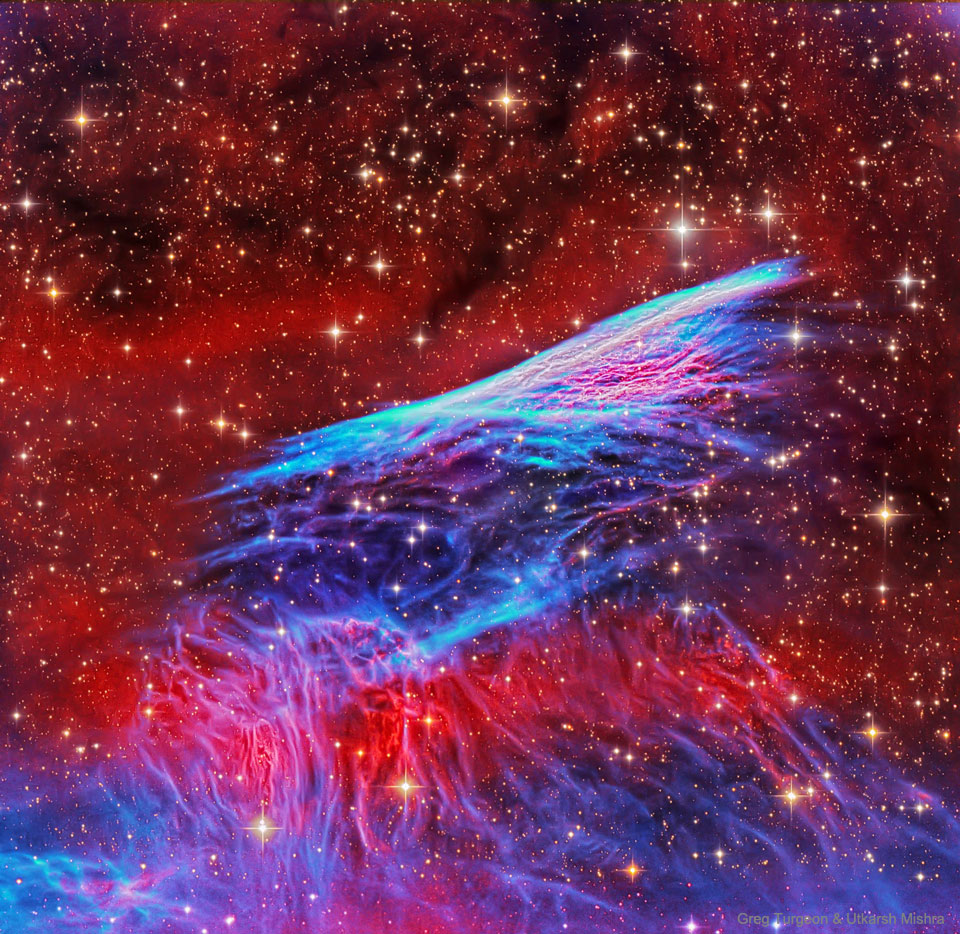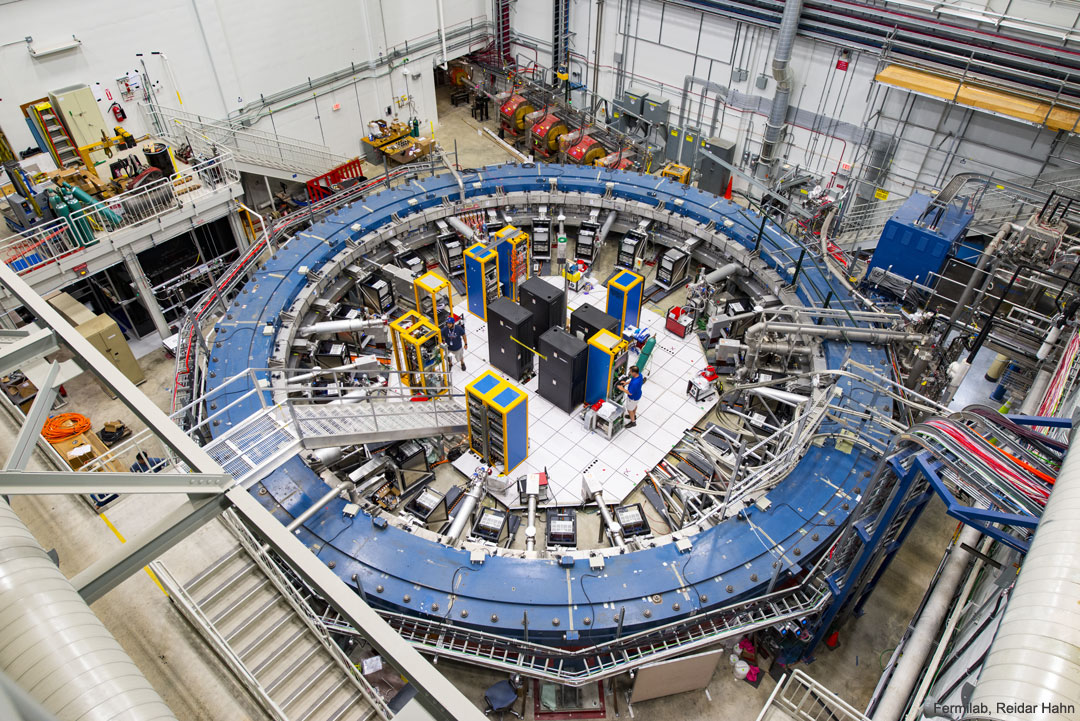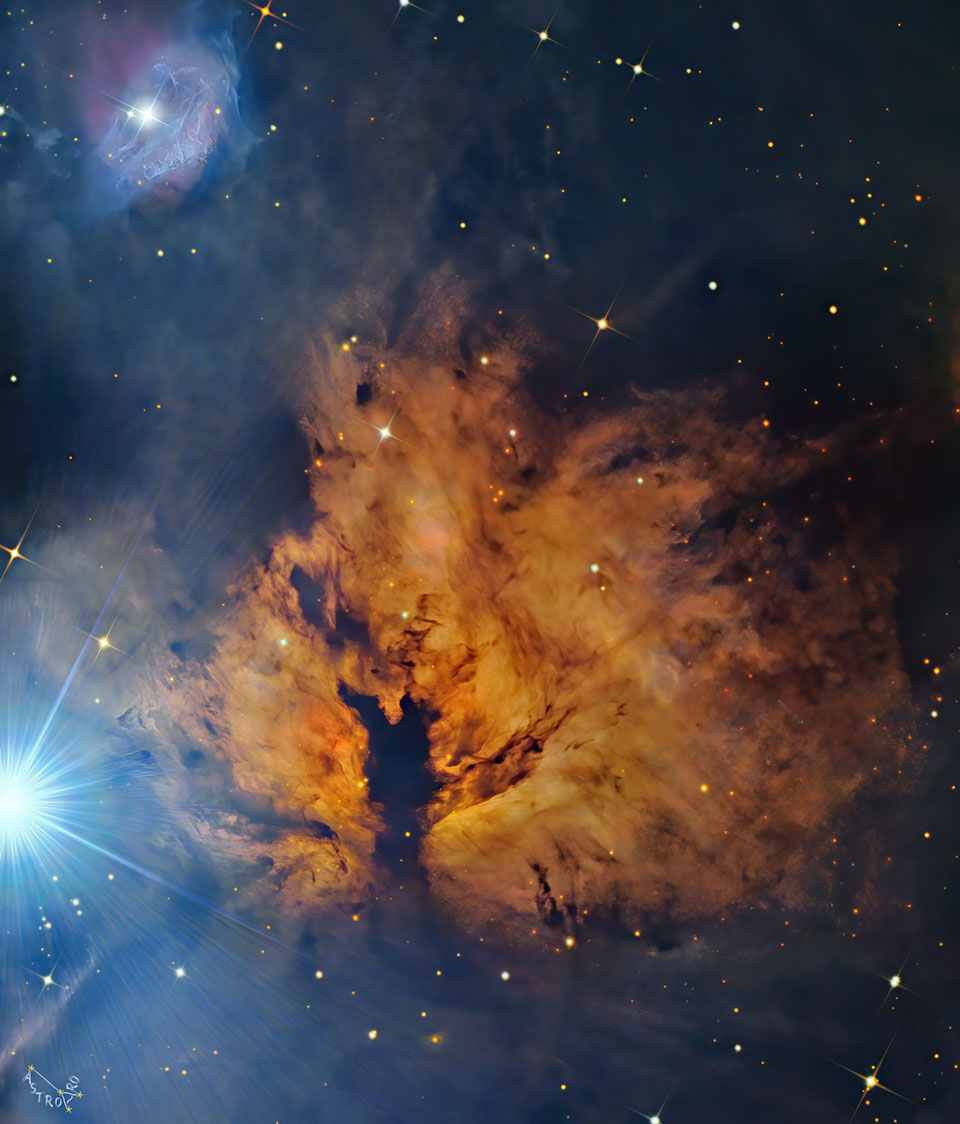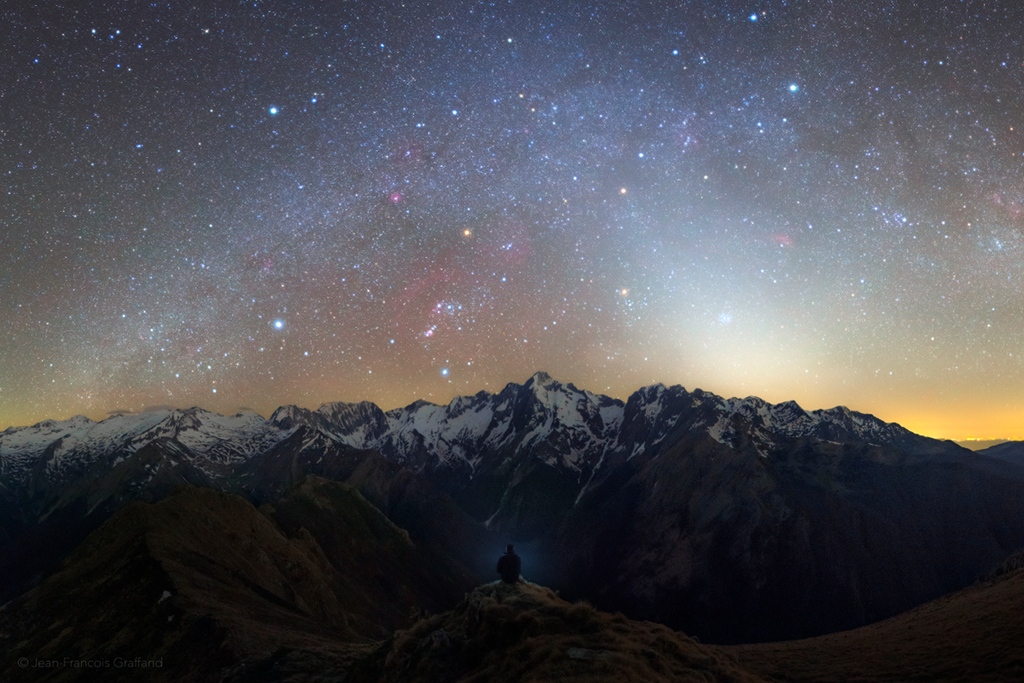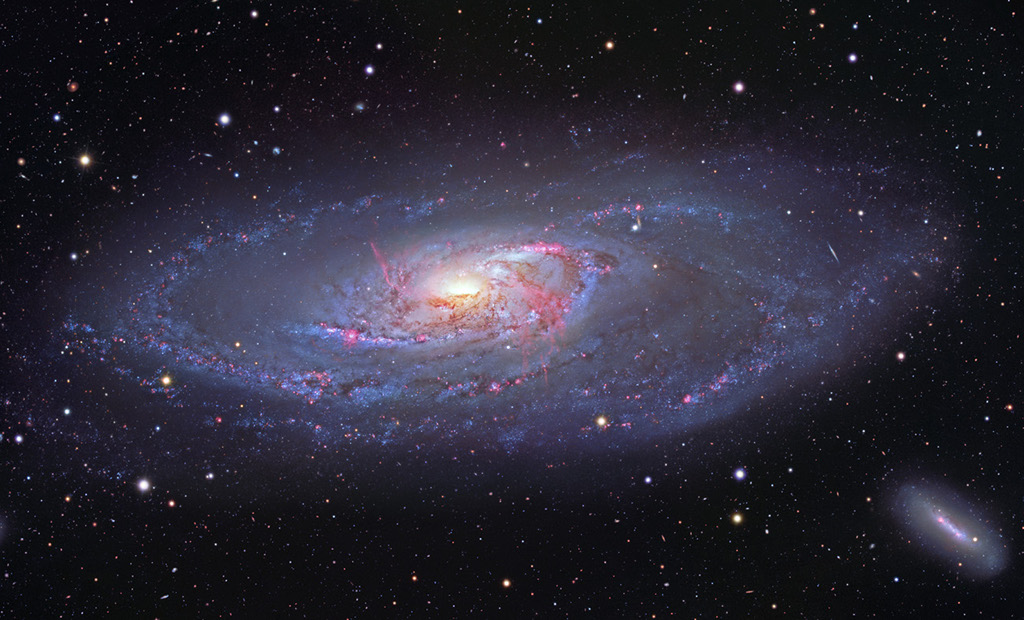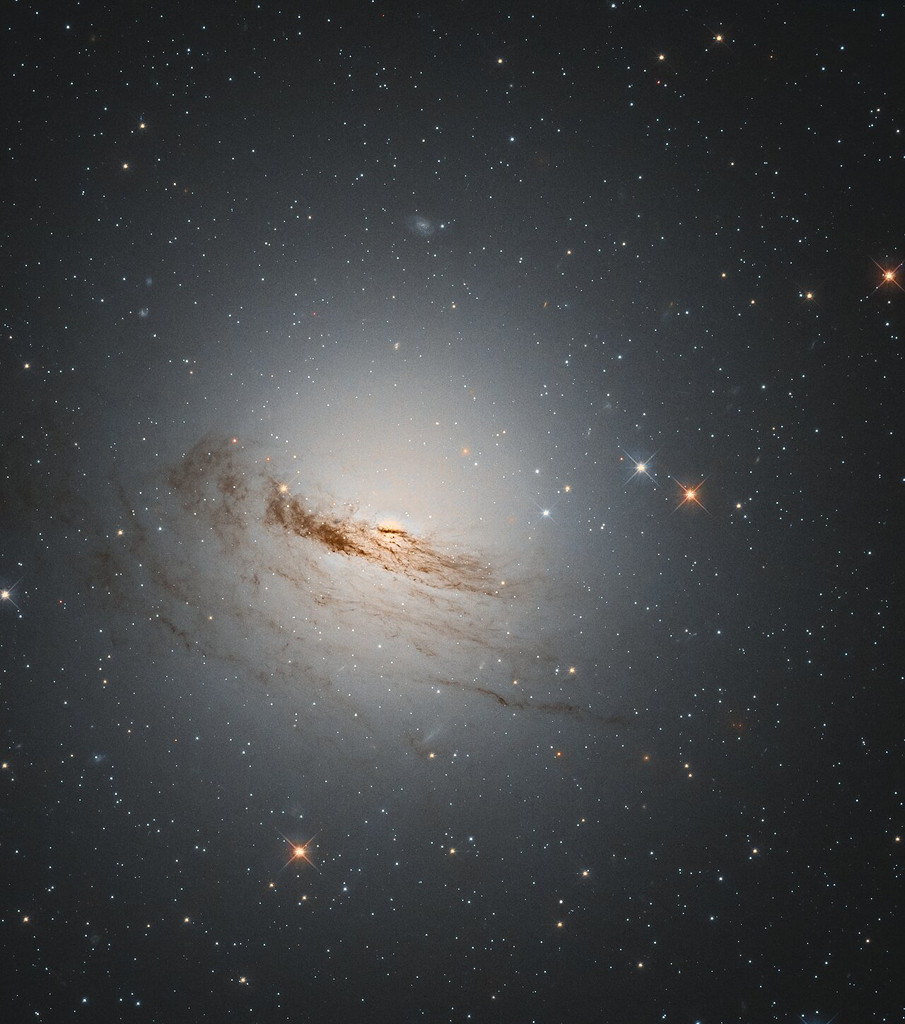
Light rays from accretion disks around a pair of orbiting supermassive black holes make their way through the warped space-time produced by extreme gravity in this stunning computer visualization. The simulated accretion disks have been given different false color schemes, red for the disk surrounding a 200-million-solar-mass black hole, and blue for the disk surrounding a 100-million-solar-mass black hole. That makes it easier to track the light sources, but the choice also reflects reality. Hotter gas gives off light closer to the blue end of the spectrum and material orbiting smaller black holes experiences stronger gravitational effects that produce higher temperatures. For these masses, both accretion disks would actually emit most of their light in the ultraviolet though. In the video, distorted secondary images of the blue black hole, which show the red black hole’s view of its partner, can be found within the tangled skein of the red disk warped by the gravity of the blue black hole in the foreground. Because we’re seeing red’s view of blue while also seeing blue directly, the images allow us to see both sides of blue at the same time. Red and blue light originating from both black holes can be seen in the innermost ring of light, called the photon ring, near their event horizons. Astronomers expect that in the not-too-distant future they’ll be able to detect gravitational waves, ripples in space-time, produced when two supermassive black holes in a system much like the one simulated here spiral together and merge. via NASA https://ift.tt/3e56Lww

